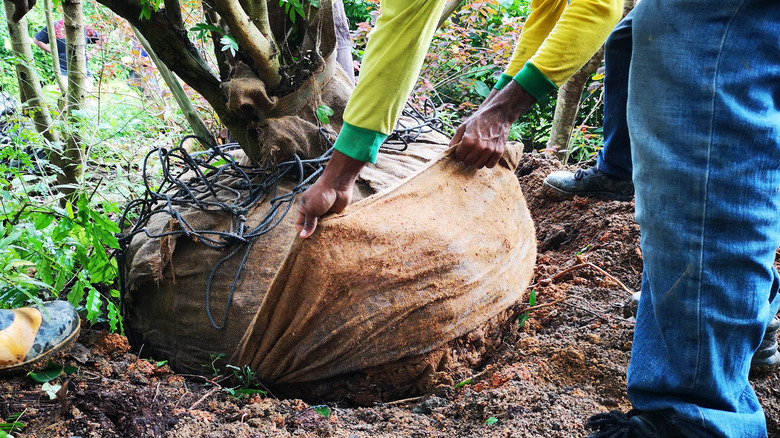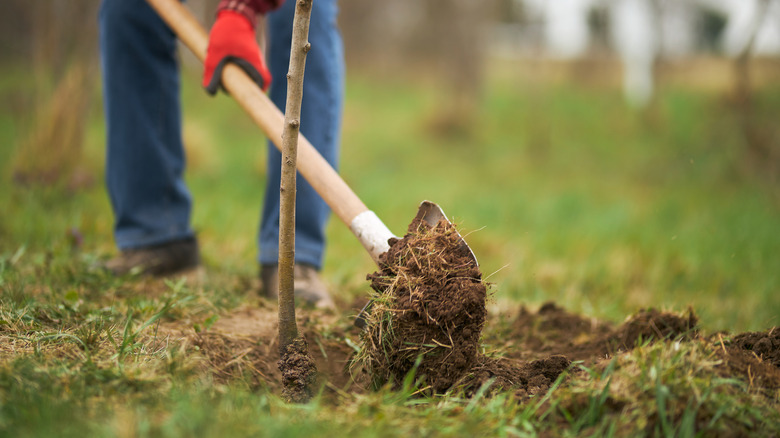When shopping for trees, you’ll find they come with their roots protected in a few different ways. Young trees are sometimes sold with bare roots. Typically, these roots are wrapped in plastic containing a moisture-retentive medium, like moss. Most trees, however, are sold in either large planters or with their roots wrapped in burlap. We know burlap is a natural material, but that does not mean it will break down quickly enough to prevent problems for your new trees. Do not leave it wrapped around the roots when you plant.
In all but the coldest regions in the U.S., fall and winter are the best times to plant trees. By planting while they’re dormant, these investments in your landscape will have an opportunity to establish roots before they must support a flush of new growth in the spring. In regions where the ground does not freeze, you can plant trees throughout the winter. Plant dormant trees in late October or November in northern climates where the ground stays frozen all winter. Early spring planting may be the best choice for those living in the coldest environments. Your local extension service can help you determine the best time to plant trees in your area, but before you do, remove any root covering, including burlap.
Why you should remove burlap before planting trees

In theory, burlap should decompose in the soil since it’s woven from materials like jute, hemp, or flax. These fibers absorb water, which helps speed the decomposition process. In spite of this, you cannot rely on the burlap breaking down in time for roots to grow. If it does not, those roots become bound, growing inward instead of stretching out. This growth process limits the tree’s access to nutrients and moisture, making it weak and more prone to disease. There is also an issue with the product used to secure the burlap to the tree. If it is planted without loosening or removing the burlap, the material wrapped around the base of the tree can girdle it. As the tree grows, that material will not expand with it and will cut off water and nutrient uptake, killing the tree.
Another lesser-known problem with burlap-wrapped trees is that not all burlap is natural. There are synthetic and blended materials on the market that look like burlap, but these fabrics will take much longer to decompose. Additionally, some natural burlap is treated with chemicals to make it last longer. Regardless of the material and how the root ball is wrapped, though, it’s best to remove burlap from your tree’s roots before planting.
How to plant a burlapped tree

To give your new tree the best chance of survival, dig a hole twice as deep and wide as the root ball. Add compost to the removed soil (use about a third the amount of soil) and combine it thoroughly. Backfill the hole with your amended soil so that when you sit the tree in it, the root section is even with the ground. Carefully remove the burlap from the tree’s root ball, including any materials that were used to tie the fabric to the trunk.
If the roots are bound, loosen them to encourage outward growth and then place your tree in the hole. Add the rest of your amended soil, tamping it down firmly so the tree is secure. Use tree stakes to encourage your tree to grow straight. This will also keep it from blowing over in severe weather until the roots are established. Water well after planting. In warm climates, you may need to occasionally water if you have a particularly dry season.




